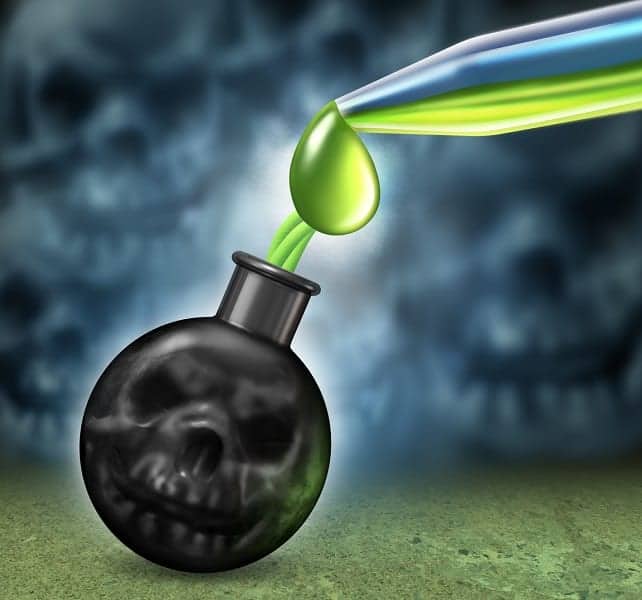Methamphetamine drug addiction is a growing problem. Learn more about the hard effects and symptoms of meth use, and how you can seek meth treatment. Methamphetamine, or meth, is a continuous problem in the United States. Easily made and accessible, meth has become one of the most abused drugs of our lifetime. While methamphetamine comes in various forms, it remains a dangerous drug of choice for many. Using meth over time can have terrible effects on your body and your mind. If you’re using meth and are trying to find a way to seek treatment, learn more here on how meth can cause serious side effects and how to get the help you need.
The Origins of Meth
Meth has a tainted history. Originally developed back in the late 1800s by the Germans, it was eventually mass manufactured by the Japanese during World War II to keep kamikaze pilots awake for their missions. Originally, it was only injected. As the war ended, it was made available to all, which caused widespread abuse to occur. In 1950s America, it was prescribed for weight loss and to fight depression. While there were no true trials or studies done, meth was given out as a solution, and it became a huge problem. By the 1970s, it was added as an illegal substance and was banned. This, however, did not stop many from discovering how to manufacture and sell meth.
The Methamphetamine Breakdown: Manufacturing
After being banned, methamphetamine was still easily produced. According to the Foundation for a Drug-Free World, “American motorcycle gangs controlled most of the production and distribution of the drug. Most users at the time lived in rural communities and could not afford the more expensive cocaine.” As meth and cocaine share similar highs, people began to learn how to reproduce the drug for cheap. “…the drug is also easily made in small clandestine laboratories, with relatively inexpensive over-the-counter ingredients such as pseudoephedrine, a common ingredient in cold medications.” According to the National Institute on Drug Abuse (NIDA), other regular household items can be used as well in the production of meth. “Methamphetamine production also involves a number of other easily obtained chemicals that are hazardous, such as acetone, anhydrous ammonia (fertilizer), ether, red phosphorus, and lithium.” When methamphetamine is so easy to make, what stops most people from producing this horrific drug?
The Scary Truth of Living in a Meth Lab
Meth wreaks havoc on small and large communities alike. When methamphetamine is produced in a home environment, it not only poisons its producers and users, but it can affect the community it surrounds. As stated by the National Neighborhood Watch,
“When the waste is not cleaned up properly, it can get into our drinking water, playgrounds, motel rooms, and other public places. Boarded up, burnt-out former meth labs can negatively affect property values in the surrounding neighborhood. Where there is meth, there is a crime. The National Association of Counties conducted a survey of 500 law enforcement agencies in 45 states and found a majority reported meth as the number one problem drug. An even larger majority reported meth to be the driving force behind the increase in various types of crime including spousal and child abuse, robberies, burglaries, and assaults. Additionally, identity theft has become closely associated with meth users.”
Meth can adversely affect its producer through the fumes and chemicals used in its production. It can cause bad coughs, skin lesions, dizziness, and a slew of other side effects. When sitting inside a meth lab for too long, it can lead to fatal consequences. Living inside a meth lab will cause irreparable damage over time. Also, meth labs have been known to explode. The chemicals can react and cause an explosion, which could end lives.
How is Meth Abused?
Methamphetamine is used in a variety of ways. Meth can be produced into several different forms as well. Some ways to use methamphetamine are:
- Smoking
- Inhaling (snorting)
- Injecting
- Orally ingesting
Methamphetamine is a brain and body stimulant. Meth causes a euphoric high with disastrous crash results when coming down. A user of methamphetamine can experience this euphoria within a matter of minutes, depending on how they’ve taken the drug. When the user is chasing that euphoric high, they will go on something called a “run”. The run is when a user will forego sleep, food, or any other basic need and use the drug for days on end to continue the high. Bingeing of this drug can lead to serious consequences, including death. Learning more about the signs and symptoms of abuse will help you or someone you love to get the help they need before it’s too late.
Meth Abuse: Spotting the Signs and Symptoms
Meth is one of the most addictive and destructive drugs known today. While it is not the most used, it is a popular drug amongst teens and adults alike. Knowing how to recognize if your loved one is abusing methamphetamine can be lifesaving. Some signs of meth abuse are:
- Sleeplessness
- Large or distinctive weight loss
- Loss of appetite
- Nervousness
- Anxiousness
- Restlessness
Meth keeps your body hyperactive and alert while giving you a very euphoric high. Someone who abuses meth will be overactive and they will not be able to hold their attention very long. A meth user may also leave their drug in plain sight. If you see the following, it may mean that your loved one is abusing methamphetamine:
- Small bags of white powder
- Syringes
- Crumpled aluminum foil
- Soda cans with holes punched in the sides
- Crystal pipes
- Inexpensive ballpoint pens
If all the signs are there, it will be time to get you or your loved one the meth treatment and care they deserve. The road to recovery is not easy, but the effects of methamphetamine abuse will destroy lives. Some other symptoms to look for when determining if meth abuse is occurring are:
- Hallucinations or delusions
- Rotting teeth also referred to as “meth mouth”
- Skin lesions or rashes
- Mood disturbances
- Aggression
Methamphetamine over time will consume their body and mind, leaving it ravaged. Knowing what to look for can save a person’s life before it gets to the point of no true return.
Short Term Side Effects of Methamphetamine
Meth is a powerful drug. Its chemical structure works fast and can quickly create anarchy inside a person’s body. According to NIDA, some short-term side effects of methamphetamine abuse are:
- Increased focus
- Increased energy
- Increased breathing rate
- Rapid heartbeat
- Fever
- Low appetite
- Euphoric high
Meth can also cause someone to be extremely careless and distracted. A person high on methamphetamine can lose interest in their daily duties, such as feeding themselves or their children, doing household chores, going to work, or spending time with their friends and family. While they will be hyperactive, they choose to only do the things that align with their meth abuse. The side effects for short term use may seem minor compared to one’s feelings on this drug. However, regardless of the side effects and euphoric feelings crystal meth use can bring its user, an overdose is common and can occur. Some side effects of an overdose can be:
- Chest pain
- Coma or unresponsiveness (in extreme cases)
- Difficulty breathing
- Heart attack
- Irregular or stopped heartbeat
- Kidney damage and possibly kidney failure
- Paranoia
- Seizures
- Severe stomach pain
- Stroke
- Very high body temperature
Meth can create a lot of damage in a short time frame. Over time, however, it can reverse all good from a person’s life and make it nearly impossible to live a healthy existence.
Long Term Meth Effects on Addicts
Long term methamphetamine abuse leads to harsh and sometimes fatal consequences. Crystal meth effects break down brain and nervous system functions over time and can inhibit normal heart function. Some long-term meth effects are:
- Aggressive or violent behavior
- Changes in brain structure and function
- Deficits in thinking and motor skills
- Increased distractibility
- Memory loss
- Mood disturbances
- Psychosis, including:
- Paranoia
- Hallucinations
- Repetitive motor activity
- Severe dental problems
- Weight loss
Meth can also cause severe limitations in terms of forming and keeping established relationships. A chronic crystal meth user has a one-track mind, and that mindset is obsessed with staying high. Their friendships, relationships, and general lack of holding onto their people skills ruin chances of having a well-rounded life. According to NIDA, “Studies in chronic methamphetamine abusers have also revealed severe structural and functional changes in areas of the brain associated with emotion and memory, which may account for many of the emotional and cognitive problems observed in chronic methamphetamine abusers.” They can’t be relied on have reasonable emotions or make sound decisions. This becomes even worse when a methamphetamine user decides to mix other drugs with crystal meth.
Meth and Mixing: How Meth and Other Drugs Work
Methamphetamines are very difficult for a person’s body when utilized. The use of meth and other drugs is often catastrophic or even fatal. Meth is classified as a psychostimulant (or amphetamine) which affects the body’s dopamine, serotonin, and norepinephrine. These brain chemicals affect a person’s mind and nervous system. When crystal meth is introduced, it hyper-activates these sensors and sends them into overdrive. When methamphetamines and other drugs, such as CNS depressants (e.g., Oxycontin, Xanax) are mixed, the body gets thrown into a frenzy. CNS depressants slow down the body and ease things such as stress or pain while calming the mind. Meth effects, on the other hand, speed the body’s sensors. This clash of fast and slow can cause a slew of negative effects, even death. Mixing crystal meth with other stimulants like MDMA or ecstasy will lead to extremely damaging results. Each stimulates the heart and nervous system, which can lead to numerous cardio-thoracic issues like heart attacks or difficulty breathing, and eventually, the combination is fatal. The use of meth with other drugs is a slippery slope. Once a pattern is established with mixing meth and other drugs, it becomes more and more difficult to stop. The sooner therapies are sought after, the easier it can be to reduce the addiction to not only methamphetamines but also other drugs.
Therapies That Help: Treatment for Meth Abuse
Seeking help for meth abuse is possible. Although the road to recovery is a long and arduous journey, getting treatment for methamphetamine addiction is the first step to possible abstinence. Some therapies that have helped to recover meth addicts are:
- Contingency management – The following therapy provides monetary or prize incentives to encourage addicts to stay away from drugs. In return for regular, clean drug tests, patients receive physical incentives. While this may seem like an overly simplistic solution, well-structured programs are very successful.
- Cognitive-behavioral therapy (CBT) – This therapy assists addicts in overcoming their meth abuse by teaching them to avoid the various triggers that lead to a pattern of addiction. The negative thoughts and behaviors that often lead to drug abuse are identified and managed with a treatment specialist. This is one of the most effective treatments for those struggling with methamphetamine abuse.
Currently, there is a drug that is going through clinical trials called AV411. According to NIDA, “A drug called AV411 (ibudilast) that suppresses the neuroinflammatory actions of glial cells has been shown to inhibit methamphetamine self-administration in rats and is now being fast-tracked in clinical trials to establish its safety and effectiveness in humans with methamphetamine addiction.” There are other trials currently being worked on that are attempting to eliminate crystal meth addiction. One trial is experimenting with neutralizing the drug in a user’s bloodstream before it makes it to the brain. They are injecting anti-methamphetamine antibodies that would help the user’s body create their own, which would eventually fight off the addiction. As other trials continue to develop, there are still many things in place to help those addicted to meth find the light at the end of the tunnel.
How to Get Help for Methamphetamine Abuse
Wanting to receive help is the first step to a possible recovery. Meth effects and the ravaging consequences on the body and mind are serious, and the sooner help is accepted, the better the chance at recovery. Choosing what program will work best for you is crucial. At Northpoint Recovery, we understand that finding a treatment program that helps with methamphetamine abuse and addiction is paramount. Talk to one of our addiction and treatment specialists to learn more about the options available to you.
Sources:
Abuse, National Institute on Drug. “How Is Methamphetamine Manufactured?” NIDA. National Institute of Drug Abuse, Sept. 2013. Web. 05 July 2017. “What Your Community Can Do to Stop Meth.” National Neighborhood Watch. Force Multiplier Solutions, n.d. Web. 05 July 2017. Abuse, National Institute on Drug. “How Is Methamphetamine Abused?” NIDA. National Institute of Drug Abuse, n.d. Web. 05 July 2017. Abuse, National Institute on Drug. “What Are the Immediate (short-term) Effects of Methamphetamine Abuse?” NIDA. National Institute of Drug Abuse, n.d. Web. 05 July 2017. “Methamphetamine Overdose.” MedlinePlus Medical Encyclopedia. U.S. National Library of Medicine, n.d. Web. 05 July 2017. Abuse, National Institute on Drug. “What Are the Long-term Effects of Methamphetamine Abuse?” NIDA. National Institute of Drug Abuse, n.d. Web. 05 July 2017.




